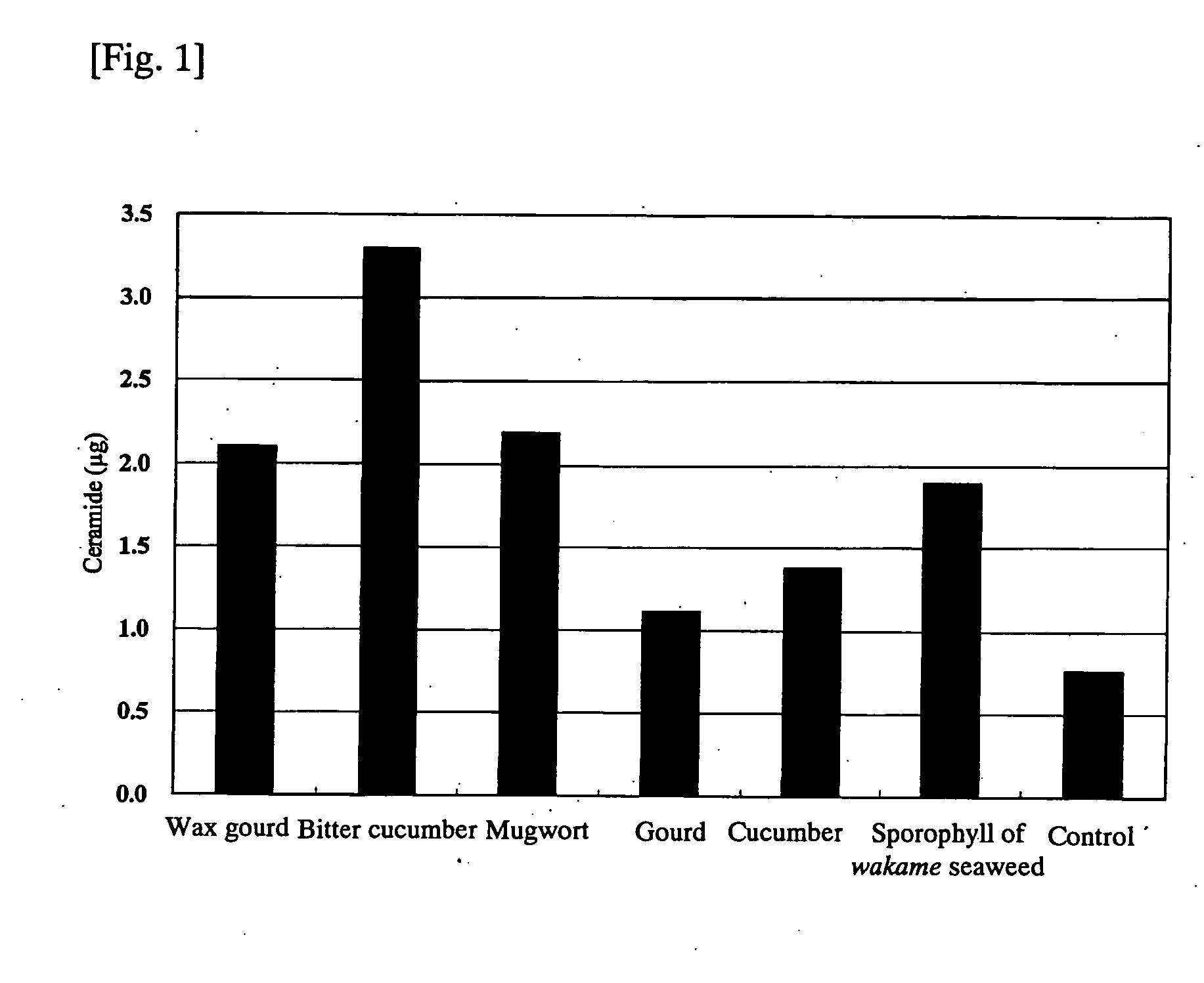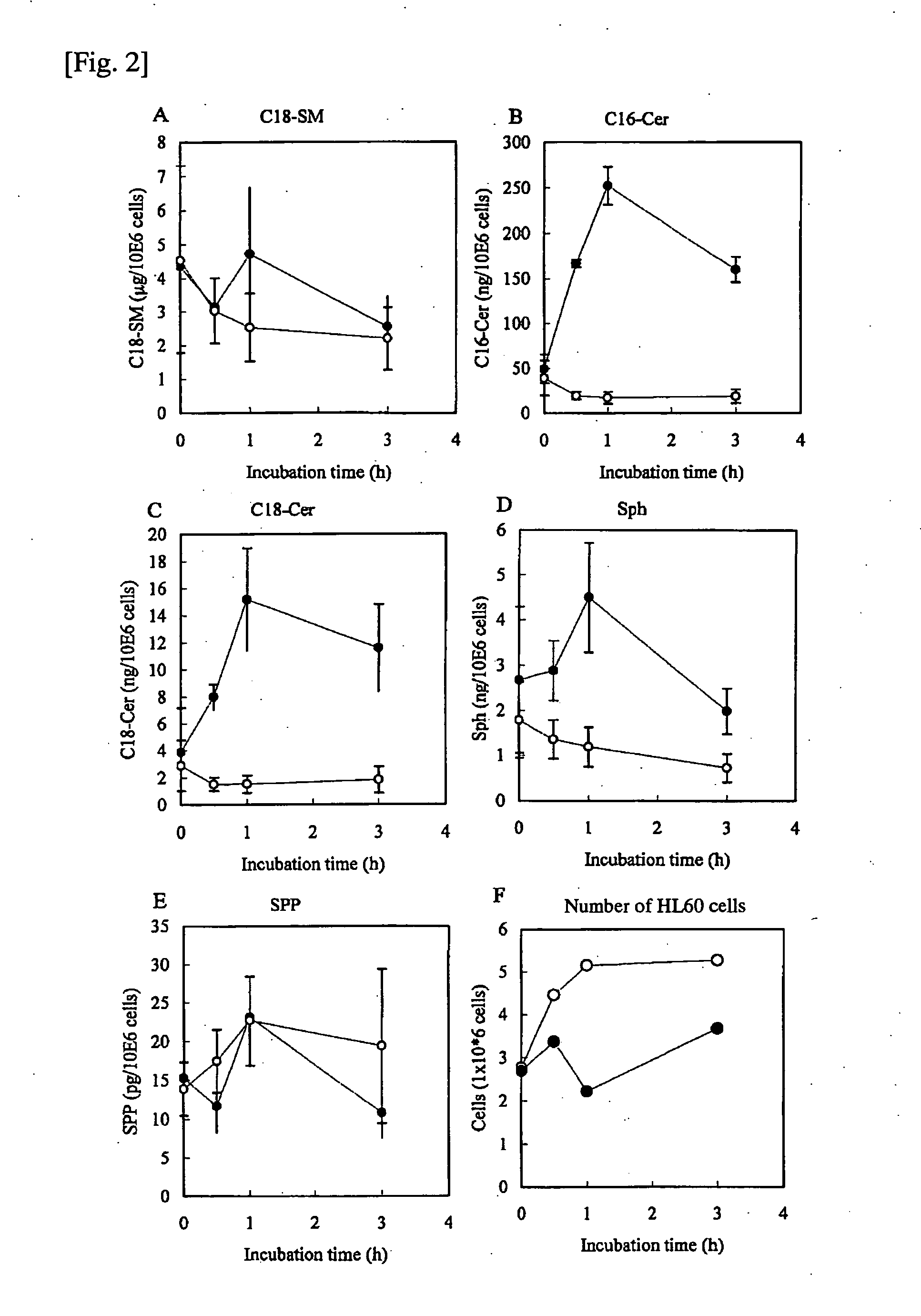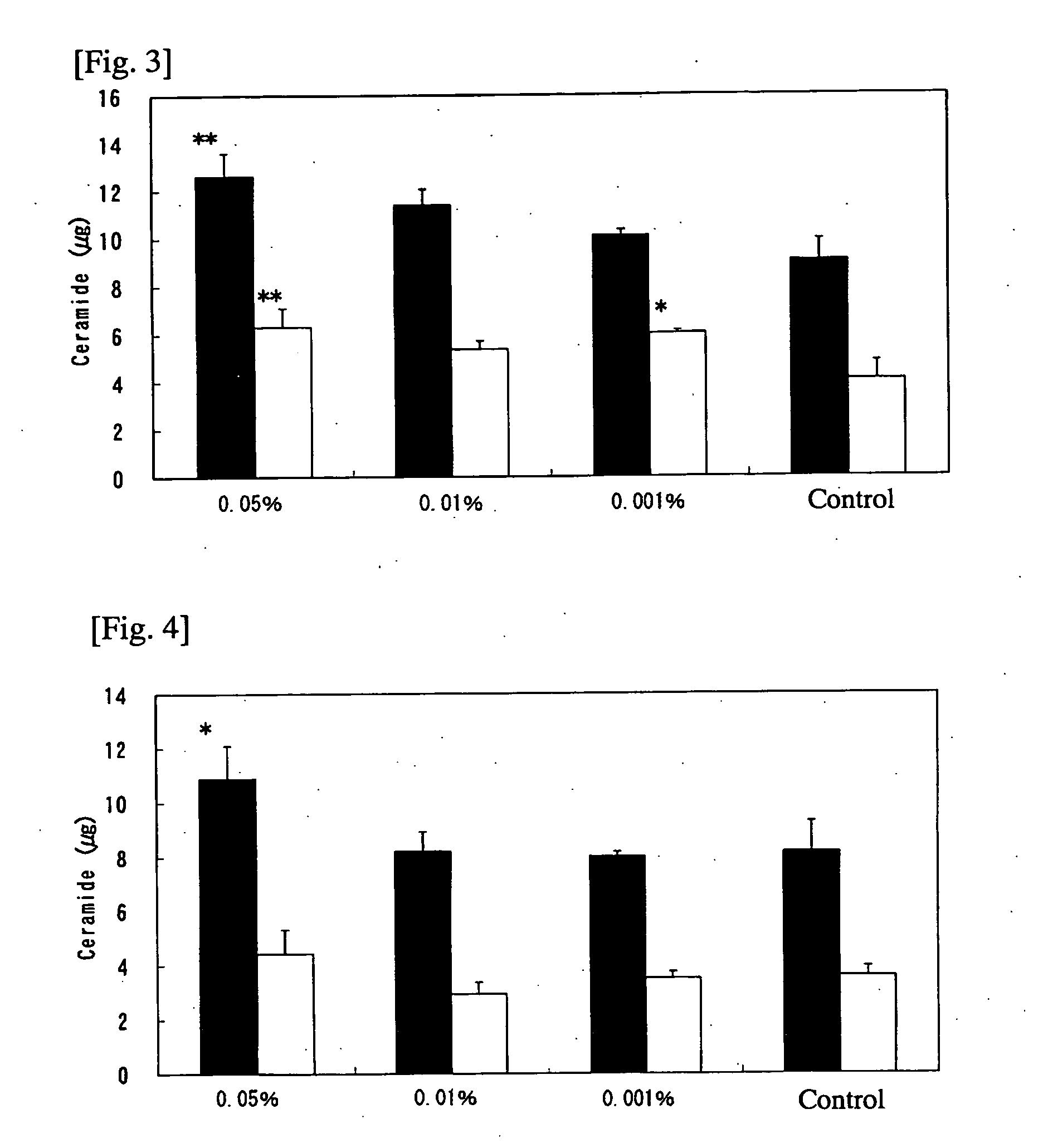Ceramidase inhibitor
a ceramidase and activity inhibitor technology, applied in the field of ceramidase activity inhibitors, can solve the problems of insufficient ceramide level in the skin, insufficient inhibitory activity of sphingoglycolipid on neutral/alkaline ceramidase, and inability to meet the needs of patients, etc., to improve the moisture retention and barrier function of the skin, improve the effect of skin ceramide content and health, and improve the effect of skin ceramid
- Summary
- Abstract
- Description
- Claims
- Application Information
AI Technical Summary
Benefits of technology
Problems solved by technology
Method used
Image
Examples
production example 1
Preparation of Ceramidase
[0122] As neutral / alkaline ceramidase, two kinds of ceramidase derived from Pseudomonas aeruginosa strain AN17 and ceramidase derived from a rat brain were used.
[0123]Pseudomonas aeruginosa strain AN17 is a bacterial strain separated from a skin released from a patient with atopic dermatitis and produces neutral / alkaline ceramidase (Journal of Biological Chemistry, 273: 14368-14373 (1998)). The bacterial strain was designated AN17 and has been deposited since Jun. 26, 1996 (original deposition date) under Accession No. FERM P-15699 with International Patent Organisms Depository, National Institute of Advanced Industrial Science and Technology, located at Central 6, 1-1-1 Higashi, Tsukuba, Ibaraki Prefecture (zip code: 305-8566), Japan. A ceramidase crude enzyme solution was prepared in the following manner.
[0124]Pseudomonas aeruginosa strain AN17 was cultured at 30° C. for 3 days in a sphingomyelin-comprising peptone yeast extract medium (0.5% peptone, 0....
example 1
Preparation of Wakame Seaweed (Undaria pinnatifida) Sporophyll Extract
[0126] One hundred milliliters of ethanol was added to 10 g of dry wakame (Undaria pinnatifida) sporophyll chips, and the mixture was stirred gently several times and then left for 1 day as it was. The mixture was filtered to give a wakame (Undaria pinnatifida) sporophyll ethanol extract. The dry weight per 1 mL of extract was 4 mg.
example 2
Preparation of a Kelp (Laminaria japonica Areschoug) Extract and a Gagome (Kjellmaniella crassifolia Miyabe) Extract
[0127] One hundred milliliters of ethanol was added to 10 g of dry kelp (Laminaria japonica Areschoug) chips, and the mixture was stirred gently several times and then left for 1 day as it was. The mixture was filtered to give a kelp (Laminaria japonica Areschoug) ethano 1 extract. The dry weight per 1 mL of extract was 2.7 mg.
[0128] An extract of gagome (Kjellmaniella crassifolia Miyabe) was also obtained in a same manner. The dry weight per 1 mL of extract was 1.8 mg.
PUM
| Property | Measurement | Unit |
|---|---|---|
| Dimensionless property | aaaaa | aaaaa |
| Therapeutic | aaaaa | aaaaa |
Abstract
Description
Claims
Application Information
 Login to View More
Login to View More - R&D
- Intellectual Property
- Life Sciences
- Materials
- Tech Scout
- Unparalleled Data Quality
- Higher Quality Content
- 60% Fewer Hallucinations
Browse by: Latest US Patents, China's latest patents, Technical Efficacy Thesaurus, Application Domain, Technology Topic, Popular Technical Reports.
© 2025 PatSnap. All rights reserved.Legal|Privacy policy|Modern Slavery Act Transparency Statement|Sitemap|About US| Contact US: help@patsnap.com



